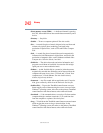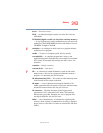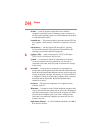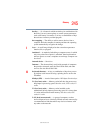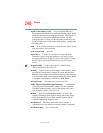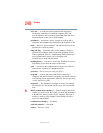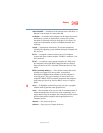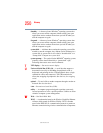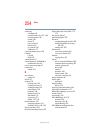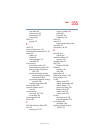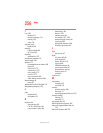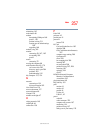
250
Glossary
5.375 x 8.375 ver 3.1
Standby — A feature of some Windows
®
operating systems that
allows you to turn off the computer without exiting your open
applications and to continue from where you left off when you
turn the computer on again.
Suspend — A feature of some Windows
®
operating systems that
allows you to turn off the computer without exiting your open
applications and to continue from where you left off when you
turn the computer on again.
system disk — A diskette that contains the operating system files
needed to start the computer. Any diskette can be formatted as a
system disk. A system disk is also called a “bootable disk” or a
“startup disk.” Compare non-system disk.
system prompt — The symbol (in the MS-DOS
®
operating system,
generally a drive letter followed by a “greater than” sign)
indicating where users are to enter commands.
T
TFT display — See active-matrix display.
U
Universal Serial Bus (USB) 2.0 — A serial bus that supports a
data transfer rate of up to 480 Mbps for peripherals such as
keyboards and pointing devices. USB peripherals have a single
standard for cables and connectors. The USB standard also
allows hot swapping of peripherals. See also bus, hot swapping,
serial.
upload — To send a file to another computer through a modem or
network. See also download.
USB — See universal serial bus (USB).
utility — A computer program designed to perform a narrowly
focused operation or solve a specific problem. Utilities are often
related to computer system management.
VW
Web — See World Wide Web.
Wi-Fi — A trademarked term by the Wireless Capability Ethernet
Alliance which stands for Wireless Fidelity. Wi-Fi is another
term for the IEEE 802.11 communication protocol to permit an
Ethernet connection using wireless communication components.



